HEALTHY HAPPENINGS November 2016 |
|
|
|
Don Leathers Healing By Cactus Moloney |
|
t is easy to have knowledge, but we must start with a foundation, Dr. Donald T. Leathers ND, with Phoenix Rising Center, said while speaking about the connection to health and living in the present, in a free Moonflower class. He asked the class to be present, be here, right now. 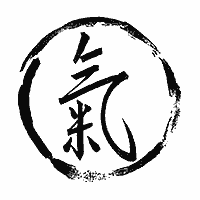 “In this moment is what real life is,” he said. A person with good health will have a vital force and be present, he said. A person with disease is uncomfortable, lacking health, they are disconnected and living in the past or the future, not the present. “What we feel matters,” Leathers said. Feelings are the fuel that moves our life, he said. “The heart needs to be open, to feel and experience, to have life.” When a person is present they cannot use judgment, fear, grief or anger. If a person uses these emotions they will move out of the present and back into the past or the future, essentially cutting the Qi, the circulating life force. In order to be healed one must be unconditionally accepting of what is right now, he said. The body will try and get our attention, he said, it will describe how deep the health problems are. Leathers showed a diagram of how the body will show signs of problems early by way of ectoderm, or the skin and surface areas. The body will show sign of deeper health problems in order on the chart, with the mind being the deepest and most protected. Tools are used for healing, such as medication, and can help mellow things down, but these should only be part of the process to healing, they do not heal, he said. “If you just have skin and gut issues, you are pretty lucky,” Leathers said. As the disease progresses deeper, the Qi will become weak and it will become harder to treat, he said. To have life, we have to have an exchange, food is an exchange, we take and we give. Food has its true nature, if it is treated well, it will grow well. Pain is a wakeup call, he said. It can bring you into the here and now. If you are having joint problems, don’t drive it back inside. The analogy Leathers gave was if you seal up a cut, the salve shuts the air off and heals from the top of the wound, not from the inside. He would instead use a little honey and air to heal the wound from in the inside out. Dr. Leathers wants to engage people to be part of the healing process and encourages self-responsibility. “A pill won’t heal,” he said. Embrace emotions and acknowledge them. “I feel” begins integration and is fuel for life. You must get comfortable with your emotions. When we have drama and chaos the emotions are not integrated. The mind should be integrated with Qi and the Universe. “The first thing in treatment is to build the Qi,” Leathers said. |
|
November is Lung Cancer Awareness. Tips to quit. |
|
Quit online, quit by phone, or quit on your own. Below are some helpful tips for kicking that old habit, smoking, courtesy of waytoquit.org. 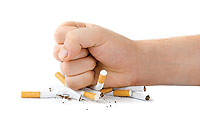 The #1 indicator of whether or not a person will successfully quit tobacco is the number of times they’re willing to try. It is a process, quitting, that involves commitment, personal assessment, a plan for success, slip control, and rewards for success. Commitment means evolving from “I’ll give it a try” to “I’ll do it!” Once you’ve truly convinced yourself to quit, the rest of the process will be much, much easier. Once committed, assess yourself. Do some soul searching (or light introspection) and try to figure out and understand why you smoke. Ask yourself, do you do it as a social habit, stress reliever, to kick boredom, or something else. Knowing why you smoke will help you create a plan of success with specific actions and rewards that will help you replace your need to smoke. When creating your plan for success, decide what would work best for you. Choose other activities to relax or relieve stress such as exercise, going for a walk, meditation, etc. Also, find a technique or approach to quit that works for you such as cold turkey (mark a stop date and stop), tapering (slowing stop smoking), avoid places you smoke, and/or seeing how long you can wait between cravings. Finally, let your friends and family know that you are trying to quit so they can support you. Don’t become discouraged with slips. It takes most people 2-11 times to successfully quit. A slip doesn’t mean you failed, it just means you slipped. Don’t give up. Rewards vary by person, but treat yourself! You deserve it. The hardest time to quit is the withdrawal period that lasts 24-48 hours after your last cigarette. Plan for dealing with withdrawal with the following D’s: 1) Delay – wait it out, urges to smoke typically pass in about 3 to 5 minutes. 2) Distract – Keep busy. Do something you like that will keep your mind off smoking. 3) Drink Water – It satisfies cravings and helps your body get rid of nicotine. 4) Deep Breaths – Slow, deep breaths will help you relax and make it through cravings. 5) Discuss – Talk with family and friends for support. The 3 A’s are also helpful when quitting tobacco. They are important things to remember such as: 1) Avoid – Stay away from places, situations or people that make it hard to quit smoking. 2) Alternative* – Keep a substitute for smoking handy like gum, mints or crunchy vegetables. 3) Adjust – Make new distractions such as taking a walk, working on a hobby or something else that keeps you busy. 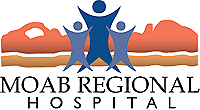 *A note about e-cigs: They are NOT a good alternative as they have NOT been proven safe. Some chemicals used in vapes can cause cancer. Teens and adults who use e-cigs are more likely to smoke cigarettes. A free educational presentation will be held by the South Eastern Health Department at Moab Regional Hospital on Thursday, November 10th from 5:30 to 7:00 pm with dinner provided. If you have any questions or would like to attend, please contact Susan Toth at (435) 719-5580 or susant@mrhmoab.org. |
|
Moab Nursing Students Leave A Lasting Impression |
|
Mike Badger has spent most of his life living in resort towns and travel destinations, and understands the importance of local resources and infrastructure in these frequently remote and small towns. This understanding was gained through his business dealings in these towns, but was solidified through a medical treatment experience at the Moab Regional Hospital for an infection he contracted after knee surgery. 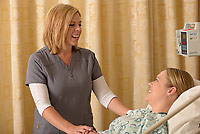 During this difficult experience the nursing students from Utah State University Moab working at the Moab Regional Hospital (MRH) provided a level of care and concern to Badger that carried him through the ordeal, and left a lasting impression on him. For 90 days Badger, a prominent real estate business owner, spent two hours a day getting antibiotic infusions at the MRH to fight the infection. He spent 180 hours interacting with hospital nurses and USU-Moab student nurses, who connected IV’s every day to a peripherally inserted central catheter (PICC line) that ran infusions to his heart and fought the infection throughout the body. Thanks to the resources offered by the hospital and the above and beyond care provided by the nursing staff, Badger had a full recovery and an experience to remember forever. Spending such a large amount of time hooked up to an IV through a PICC line was not easy. “I dreaded the amount of time it would require. The nurses understood my situation, were very kind, and provided exceptional care that helped remove the dread from the experience,” said Badger. When Badger contracted the infection was actually living in Telluride, CO, not Moab. However, the medical facilities in Telluride did not offer the antibiotic infusions Badger required, while MRH did. So, for three months during the winter he lived in a hotel he owns and operates in Moab, the Gonzo Inn, and received the needed treatments at MRH. “I’m grateful that rural areas like Moab have access to great healthcare facilities,” said Badger. “I spend a majority of my time in smaller communities, and it’s reassuring to know I can get the care I need without going too far.”  MRH has a partnership with USU-Moab that allows nursing students to gain hands-on experience in a real-life setting. Many of the nurses currently working at MRH received their education through the USU-Moab nursing program. Their influence within the community is far reaching and because of the many experiences similar to Mike Badger’s, they have gained a reputation as a hospital with high standards for providing quality, meaningful care. MRH has a partnership with USU-Moab that allows nursing students to gain hands-on experience in a real-life setting. Many of the nurses currently working at MRH received their education through the USU-Moab nursing program. Their influence within the community is far reaching and because of the many experiences similar to Mike Badger’s, they have gained a reputation as a hospital with high standards for providing quality, meaningful care. As a result, Badger decided to provide scholarships for USU-Moab students through his local business, the Gonzo Inn. The general scholarships are offered to local Grand County High School students who plan on staying in Moab to attend USU-Moab. Badger’s generous contribution, along with those of several other local businesses and groups, provide critical financial support to local students seeking degrees and an education in Moab. “It’s the least I could do to give back to a community that has done a fantastic job educating and training great people we depend on.” remarked Badger on the scholarship contribution. USU-Moab offers a variety of academic and career training programs tailored to the needs of Moab and Grand County. For more information on these programs, or how you can help local students achieve their academic goals and contribute to the local economy, visit moab.usu.edu. |
|
|
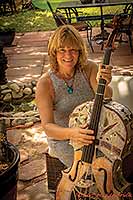 “Progress not perfection”, is the movement forward into creating an inspiring life! This is the mantra that I have learned to live by. If I waited for things to be perfect before I started a project I would still be sitting and waiting now.
“Progress not perfection”, is the movement forward into creating an inspiring life! This is the mantra that I have learned to live by. If I waited for things to be perfect before I started a project I would still be sitting and waiting now. 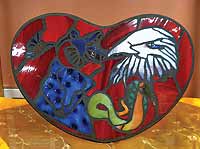 When one is willing to change the stories we tell ourselves about life then there are unlimited possibilities of where your life will take you. Mine took me to Moab and into the gift of healing through art and life coaching. Life is full of experiences from which a story is formed. That story leads to a belief that is reflected in how you are living your life. If you can remember that an experience is just that, and that the stories you choose to believe can always be rewritten.
When one is willing to change the stories we tell ourselves about life then there are unlimited possibilities of where your life will take you. Mine took me to Moab and into the gift of healing through art and life coaching. Life is full of experiences from which a story is formed. That story leads to a belief that is reflected in how you are living your life. If you can remember that an experience is just that, and that the stories you choose to believe can always be rewritten. 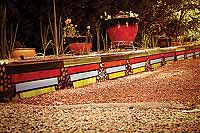 One of my mentors Dr Wayne Dyers once said, “Just because you think a thought does not make it real”. Your brain wants to hang on to these stories as if they are real. The trick is to train the brain to see things from different angles. When you have an experience the subconscious will go into the memory and connect it to another similar experience. It may even be relating the experience to one that happened when you where 11yrs old. This is because it seems familiar and there is evidence from the past to relate too. However it is important to note that as a adult running your life from the mind of an 11 yr old you will lead you into unhealthy circumstances. Choosing to see things differently will require you to be willing to go into unfamiliar territory that may even feel fake at the beginning. Looking to others that are doing what you wish to do and learning from them such as a life coach will help the training process.
One of my mentors Dr Wayne Dyers once said, “Just because you think a thought does not make it real”. Your brain wants to hang on to these stories as if they are real. The trick is to train the brain to see things from different angles. When you have an experience the subconscious will go into the memory and connect it to another similar experience. It may even be relating the experience to one that happened when you where 11yrs old. This is because it seems familiar and there is evidence from the past to relate too. However it is important to note that as a adult running your life from the mind of an 11 yr old you will lead you into unhealthy circumstances. Choosing to see things differently will require you to be willing to go into unfamiliar territory that may even feel fake at the beginning. Looking to others that are doing what you wish to do and learning from them such as a life coach will help the training process.